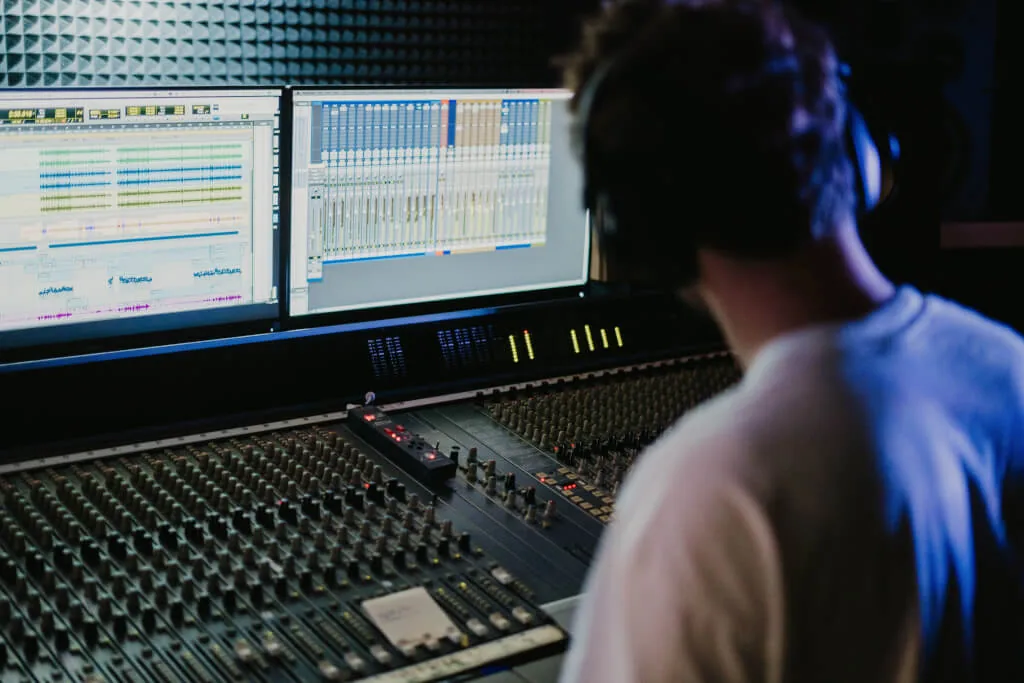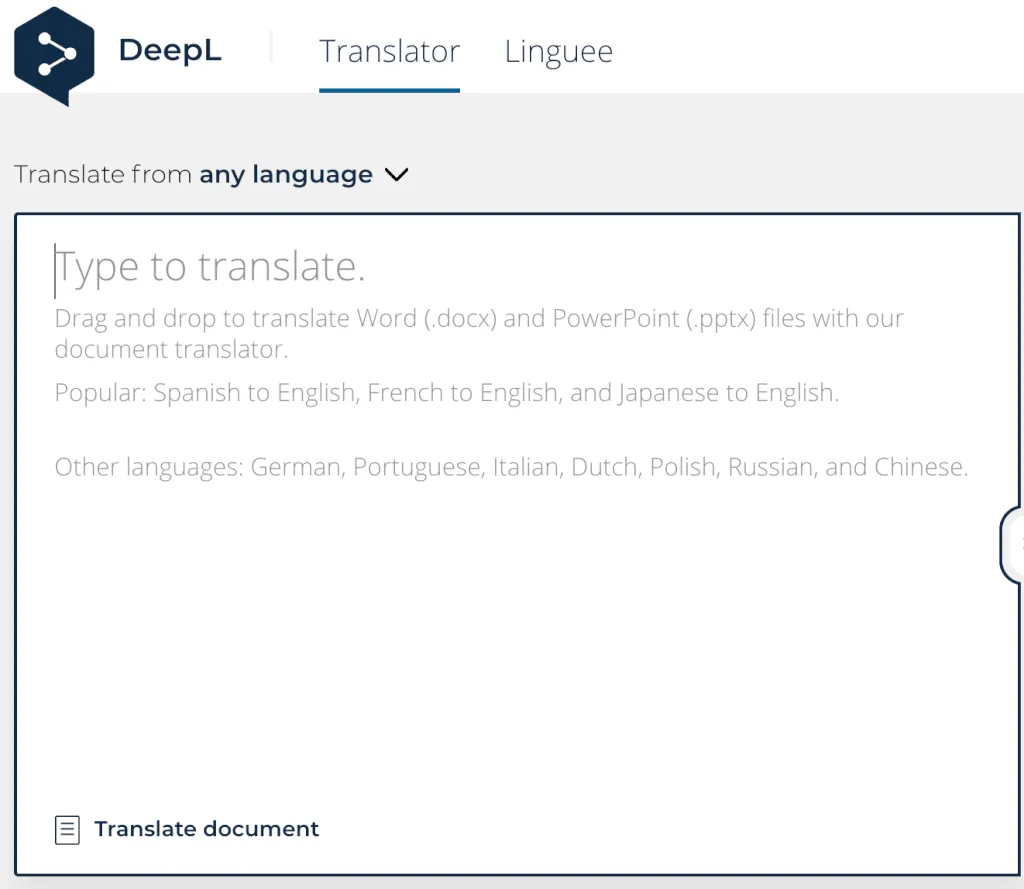Audio Description Online: A Black Hole for Accessibility
It’s a difficult game of catch-up to expand the presence of audio description online.
While audio description is becoming increasingly embraced in the world of TV, film, and video on demand services, there remains a severe lack of availability online. As inaction continues, this black hole in the online media universe continues to grow wider. The blind and visually impaired aren’t the only ones missing out on the opportunities audio description can provide, either…
April 17, 2015 was a big day for audio description, when Marvel’s Daredevil became the first show on Netflix to include an audio description track. This meant low-vision viewers could select an option to have a narrator describe everything on screen that they would otherwise miss. Featuring blind superhero Matt Murdock as the spin-off’s main protagonist, it was an apt choice for the visually impaired community.
Since then, the video on demand provider has been steadily increasing the number of productions that feature audio description. According to the American Council of the Blind (ACB), Netflix has 1,272 film and TV titles with audio description on its platform in the United States, accounting for around a quarter of its total content. There’s still a lot of work to do, but the trend is positive.

Staying state side, the situation is even rosier for blind movie-goers. Since 2018, federal regulations require cinemas to have the necessary equipment to provide an audio description in the English language. In most cases, visually impaired people access the narration track through special headphones. As such, nearly all first-run movies are now accessible to the blind.
Audio description has proven to be very popular with visually-challenged audiences. After watching war epic 1917 back in February, one North Carolinian movie fan was full of praise: “I would have missed more than 60% percent of the movie if it had not been for the use of audio description.”
Audio Description Online: A Black Hole for Accessibility
If video on demand services and cinemas can do it, why aren’t enough audio descriptions being produced for online content?
Audio description can be a headache for companies producing visual media. As is often the case, money represents the biggest obstacle. To ensure audio descriptions meet the highest standards, media service providers sign up professional authors, project managers, voice artists, and sound engineers for a polished final product. All of these cost factors make production a relatively expensive process, with prices ranging between $15 to $75 per minute of audio produced.
Meanwhile, video-sharing platforms have brought about an explosion in user-generated content appearing online. It is estimated that over 500 hours of footage is uploaded onto YouTube every minute, most of which originates from amateur content creators. To keep on top of demanding publishing schedules, do-it-yourself content creators only have speedy turnarounds on their mind, meaning time-consuming tasks such as audio description fall by the wayside.

The traditional workflow for audio description production is simply not profitable for shorter clips. If producing a 10-minute video ends up costing $500, it makes little financial sense to spend the same amount of money on the audio description. In reality, the final narration file needs to be around a tenth of the price of total production.
As a result, videos rarely include an audio description on the web. And with visual content being uploaded at an ever-increasing rate, the black hole in the online media universe continues to grow larger. Is automation the answer for increasing the amount of audio description online?
Is automation the answer for increasing the amount of audio description online?
In fact, the internet provides the simplest technological foundations for audio description. It should also come as no surprise that automation holds the key to greater audio description availability.
“While many websites have been optimized for screen readers, we’ve been left out in the cold when it comes to videos.” This was the view expressed by many blind web users during a recent consumer analysis campaign. For years, younger audiences have been turning to video-sharing platforms instead of the TV for their entertainment, meaning visually impaired Millennials and Gen Zers are missing out on much of the latest content.
Providing audio descriptions for the many years of footage added to these platforms every day represents an enormous challenge. To have any chance of bridging the gap, automation is the only realistic solution.

Automation simplifies and digitalizes production processes. Frazier, an intelligent browser-based Production Suite developed by VIDEO TO VOICE, allows audio description professionals to work through everything on one platform, eliminating the need for project management.
To save on voice actor and recording studio costs, the scripts are read out using speech synthesis technology through text to speech, in other words: a computer-generated “human” voice. If the manuscript needs additions or rewriting, there is no need for expensive re-recording sessions and hiring fees. Everything can be adjusted on the platform with a few clicks of the mouse.
Only around 360 million people worldwide speak English as their first language, so translations also play a key role in improved accessibility. If the audio description needs to be provided in another language, online translation services such as DeepL and Linguee are put into action for instantaneous results.

Meeting consumer needs
Ultimately, the goal is to make audio description as widely available as subtitling. Here’s why content creators and advertisers should be getting excited… and take caution.
Over 1 billion videos on YouTube include subtitling. If the publisher doesn’t upload a subtitle file, the platform automatically provides captions in English, Dutch, French, German, Italian, Japanese, Korean, Portuguese, Russian, and Spanish. Whatever the language, adding subtitles promotes accessibility and represents a smart business decision.
By submitting a subtitling file, content creators can boost their videos’ SEO and increase audience engagement. YouTuber Leron Amin explains in further detail the impact subtitles can have: “Adding captions to my YouTube video added an additional 1,046 words and 393 indexable search terms. Best of all, my target keyword density increased by 68 terms.”
YouTube recently started allowing multiple audio tracks on a video, which means an audio description can be added for blind viewers. So, like subtitling, the audio description transcript could be used to improve the video’s SEO metrics through indexed keywording.
Content creators on video-sharing platforms generate revenue primarily through ad breaks. If visually impaired users have audio description activated on their accounts, it only makes sense to have commercials made accessible to their needs. Providing an audio description is also a simple method for advertisers to target the low-vision consumer market more effectively.
From a legal standpoint, media service providers are now obliged to follow Web Accessibility Initiative (WAI) and EU standards. Bloggers should also be inclined to make their sites as accessible as possible. It is going to be a huge task trying to shrink the accessibility black hole and meet consumer needs online, which is why hassle-free and speedy solutions like Frazier will play such a vital role. And those up to the challenge are the superheroes we require in a fairer, barrier-free world.